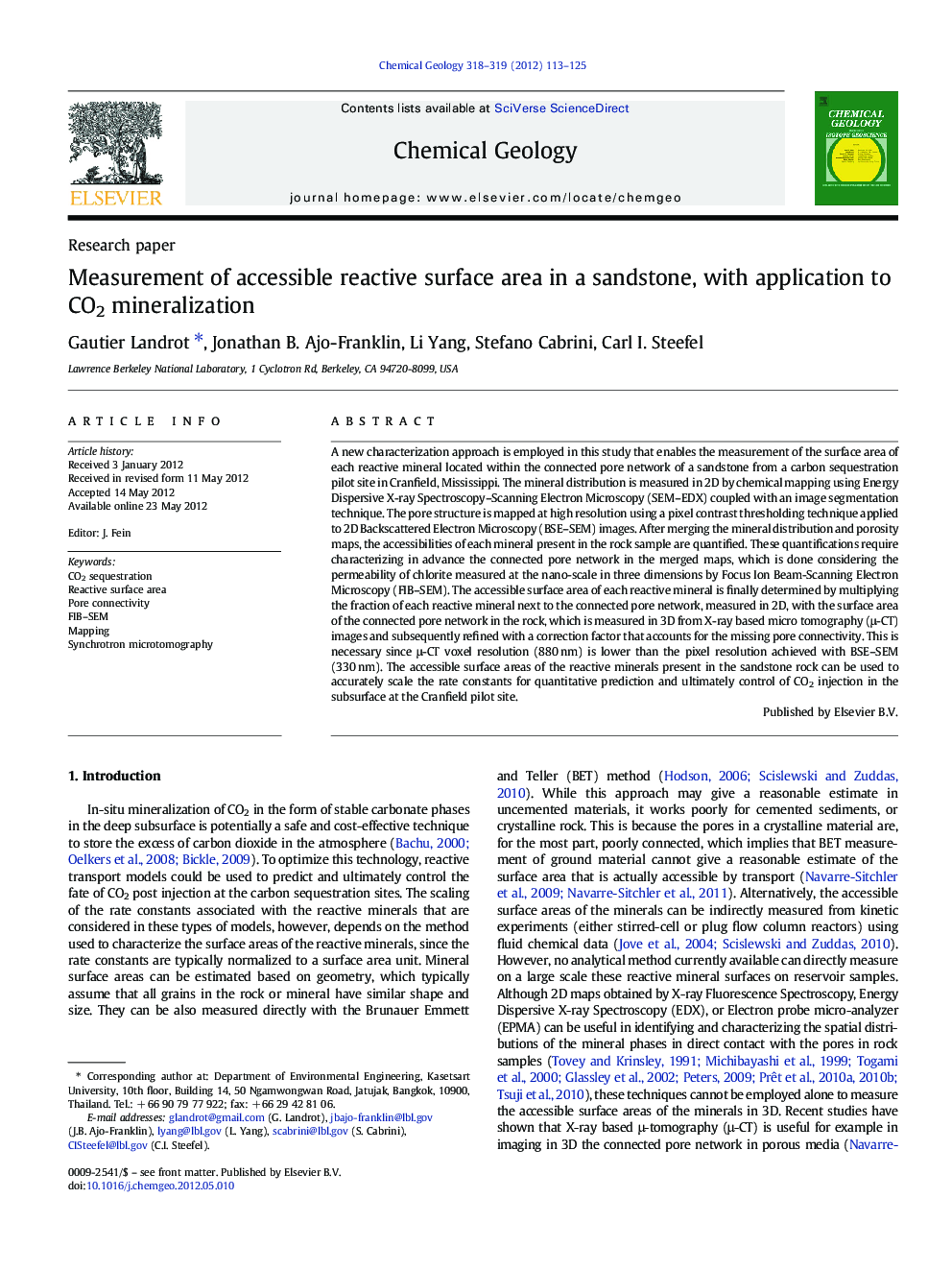| Article ID | Journal | Published Year | Pages | File Type |
|---|---|---|---|---|
| 4699386 | Chemical Geology | 2012 | 13 Pages |
A new characterization approach is employed in this study that enables the measurement of the surface area of each reactive mineral located within the connected pore network of a sandstone from a carbon sequestration pilot site in Cranfield, Mississippi. The mineral distribution is measured in 2D by chemical mapping using Energy Dispersive X-ray Spectroscopy–Scanning Electron Microscopy (SEM–EDX) coupled with an image segmentation technique. The pore structure is mapped at high resolution using a pixel contrast thresholding technique applied to 2D Backscattered Electron Microscopy (BSE–SEM) images. After merging the mineral distribution and porosity maps, the accessibilities of each mineral present in the rock sample are quantified. These quantifications require characterizing in advance the connected pore network in the merged maps, which is done considering the permeability of chlorite measured at the nano-scale in three dimensions by Focus Ion Beam-Scanning Electron Microscopy (FIB–SEM). The accessible surface area of each reactive mineral is finally determined by multiplying the fraction of each reactive mineral next to the connected pore network, measured in 2D, with the surface area of the connected pore network in the rock, which is measured in 3D from X-ray based micro tomography (μ-CT) images and subsequently refined with a correction factor that accounts for the missing pore connectivity. This is necessary since μ-CT voxel resolution (880 nm) is lower than the pixel resolution achieved with BSE–SEM (330 nm). The accessible surface areas of the reactive minerals present in the sandstone rock can be used to accurately scale the rate constants for quantitative prediction and ultimately control of CO2 injection in the subsurface at the Cranfield pilot site.
► The reactive surface areas of the minerals present in a sandstone were measured. ► Mineral distribution and pore structure were mapped in 2D by SEM BSE and EDX. ► The connected pore network was measured in 3D by μ-CT and FIB–SEM at different scales. ► Chlorite is by far the most accessible mineral to CO2 in the rock sample.
